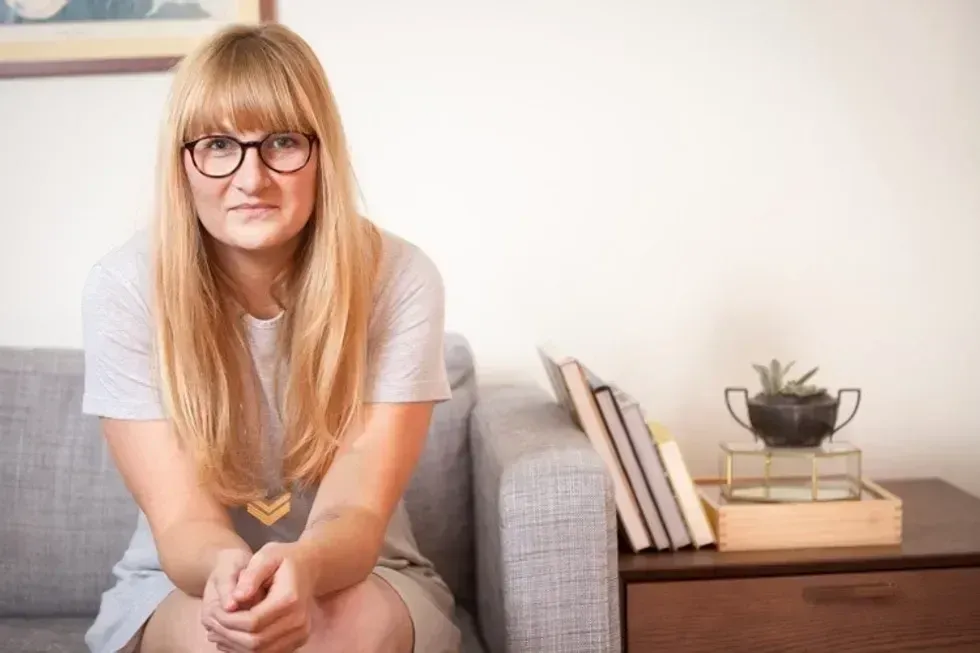This guy's response to his friends pressuring him to date is on point.
Love being single? Don't let anyone talk you out of it.
When it comes to romance, I've been through just about every page in the book.
I've stayed in happy, long-term cohabiting partnerships that lasted years. I've had summer flings, one-night hookups, and long periods of serene solitude.
Each one of these experiences has been fun, fulfilling, and meaningful — solitude included.
When I say “solitude,” I don’t necessarily mean turning off my phone and escaping to a cottage in the mountains — though I’ve done that, too, and it can be wonderfully refreshing.
Photo via iStock.
What I’m talking about here is the simple choice to live a life free of romantic encumbrances, for as long as you want.
Everything in our culture screams out against singlehood, and it can be really frustrating.
Before we’re even old enough to understand what romantic love is, we’re bombarded with the idea that everyone has a soul mate just waiting to be discovered. Even as our friends reassure us that it’s important to be a healthy, self-contained person on one’s own, it’s never long before they’re asking: “So ... are you seeing anyone? What about that one guy or girl?”
We can’t avoid the stereotypes: the “crazy cat lady,” the “40-year-old virgin,” hinting that we can never be truly happy without That Special Someone to complete us.
And that’s just the pressure on the long-term romance level, too. I can’t tell you how many times I’ve gotten incredulous looks from certain male friends when I say I have no interest in grinding up on that cute girl across the club. Yes, I can see she’s attractive. If I met her at a party, I might ask her to join me for a cup of coffee. We might hit it off. We might have great sexual chemistry and fall totally in love and move in together. Or we might not.
Photo via iStock.
But none of that makes a lick of difference to me right now because at this moment I am here to get loose on the floor — so leave me alone and let me dance.
Don’t get me wrong. Dates can be fun sometimes. But right now, I don’t want to spend 20 hours a week micromanaging my personal brand on dating websites.
I already have a full-time job. Managing a dating profile feels like tweaking marketing copy and handling a brand’s social media conversations (which is pretty much exactly what it is). You know what I’d rather spend my free time doing? Almost literally anything else.
I don’t want to meet hot, sexy singles in my area. I don’t want to booty-call a complete stranger. I don’t want to have lame hookup sex where the communication is terrible and we keep trying and failing to get the rhythm right, and then afterward we talk awkwardly only to realize we don’t have any interest in each other as human beings.
If that’s what you love, then more power to you. I really mean that. It’s your world, baby.
And for all I know, tomorrow I might make eye contact with a stranger on the street, get swept completely off my feet, and return to the Couple Zone full time. It’s not likely, but hey, quantum physics tells us there’s a theoretical possibility of anything happening at any time. I’m always open to new experiences.
But if you DON’T want to be in a relationship right now, then know that someone else is on your team.
Be proud of that choice! Own it. It’s yours.
Photo via iStock.
If you don't feel like having a one-night stand, don't. If you don’t feel like making a move on that cute guy or girl in the club, don’t. If you don’t want to spend time filling out a dating profile and swiping left and right for hour after hour — you guessed it: don’t. And be proud that you didn’t.
Don’t let your friends, or your culture, or anyone else tell you what you want. You’re the only person who knows. And if what you truly want is to be single right now, that’s damn awesome.





 Dexters Laboratory What A Fine Day For Science GIF
Dexters Laboratory What A Fine Day For Science GIF The bread doesn't lie. Facebook/Jaralee Metcalf
The bread doesn't lie. Facebook/Jaralee Metcalf Teaching in a racially and ethnically diverse world.
Teaching in a racially and ethnically diverse world. luxo jr lamp GIF by Disney Pixar
luxo jr lamp GIF by Disney Pixar Plastic doesn't belong in the ocean.
Plastic doesn't belong in the ocean. A teacher speaks to students in a classroomImage via Canva
A teacher speaks to students in a classroomImage via Canva Lee Allen in his resignation remarksImage via YouTube
Lee Allen in his resignation remarksImage via YouTube